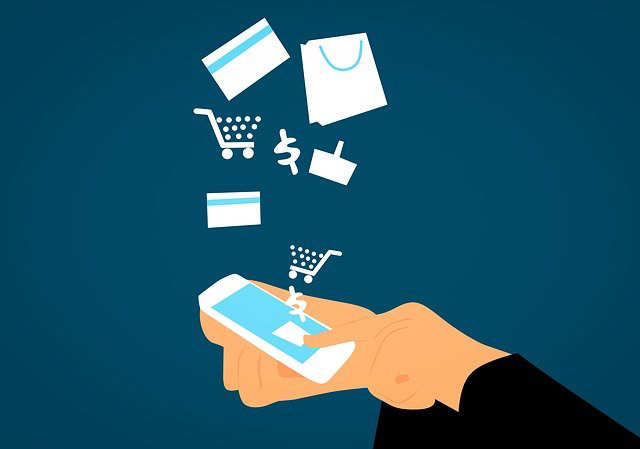The key to successful holiday marketing is the use of an omnichannel approach to engage consumers across multiple channels. Using a multi-channel approach allows brands to expand their reach out to new customers. However, it is important to remember that customers still tie their experience to a brand. This is why it is important to align your holiday marketing strategy with the season and your customers.
Personalization
The holiday season is a critical time for retailers. Both brick-and-mortar retailers and online merchants will face fierce competition. Today’s shoppers expect a seamless shopping experience across channels. Moreover, the average American purchases 14 gifts during the holiday season. So, businesses need to develop strategies and capabilities that help them create personalized experiences.
Omnichannel personalization helps retailers deliver relevant messages to their customers,
based on their preferences. For example, they can use data to target customers based on
their location. This enables them to send personalized promotions, coupons, and
advertisements to the right customers. This way, they can build a better relationship with
their customers and keep them coming back.
The omnichannel approach to personalization is crucial for retail this holiday season. With
consumers shifting between different channels, retailers need to create experiences that
speak to their unique customer. This means incorporating voice technology. Retailers should
also focus on omnichannel marketing to ensure a seamless shopping experience.
Omnichannel personalization can be challenging, especially for organizations that have
multiple locations. The front-office teams handling digital channels must communicate with
each other to create a personalized experience for the customer. Furthermore, there may not
be a marketing expert on staff to oversee the effort.
Omnichannel personalization requires the right mix of technologies and strategies to ensure
the ultimate success. Companies that are able to provide these capabilities will have a
competitive edge over their competitors. They will also have a leg up during Black Friday
and Cyber Monday. The omnichannel approach is also critical for customer service. It helps
customer service reps find products more efficiently, which means less time wasted.
Customer service must have access to data about delivery tracking and warehouse
inventory. In addition, retailers should pay special attention to returns this holiday season.
Improving returns can lead to greater customer loyalty. Further, retailers who make returns
easy will have a point of differentiation.
Creating an omnichannel experience begins with understanding the customer. Starbucks, for
example, understands its customers’ pain points and leverages this information to design an
effective omnichannel experience. Knowing the customer requires observing their behavior
on different platforms and their experiences with brands. By doing this, brands can eliminate
unnecessary marketing tools and optimize ad spending across all channels. Despite its
advantages, omnichannel personalization is still new and only 3% of companies are actively
using it.
Transparency
For this holiday season, transparency in the Omnichannel approach is the key to customer engagement. During this stressful time of year, communication is crucial to retain customers. Whether it’s via email, mobile or in-store, transparency is the key to ensuring a seamless shopping experience.
To drive sales, retailers must reach shoppers anywhere, whether it is online or off, through
any device. To do so, they must increase inventory visibility, provide more fulfillment options,
and increase pricing transparency. According to a survey conducted by Retail Systems
Research in June 2013, the most important aspect of an omnichannel strategy is a unified
customer experience. In addition, logistics, including inventory visibility, are becoming
increasingly integrated into an omnichannel approach.
With the advent of the holiday season, the need to track inventory is increasing. Retailers
must ensure that their inventory is available for consumers across all channels. They must
be transparent about concerns that may arise. For example, early promotions for Black
Friday made it seem as if the shopping day had started earlier than Halloween. By being
transparent, retailers can better manage their inventory and make better use of marketing
dollars.
Moreover, retailers should closely monitor their website metrics to ensure that it is operating
smoothly during the holiday season. In the event of any glitches, retailers must have a plan
in place to avoid losing sales. Furthermore, marketers must anticipate product demand,
inventory levels, and shipping costs before the holiday season.

Communication
As we enter the holiday season, brands have more ways to connect with customers than ever. The key is to create a consistent, personalized experience across all channels. Today’s consumers are constantly on the go, and expect excellent service. In fact, according to a study by Google, consumers use an average of eight channels to purchase products and services. Moreover, they increasingly use emerging digital purchase points, including messaging apps, social media, and voice assistants. In other words, they want a seamless experience, whether it’s on their phone, on the Internet, or in the store.
Omnichannel communication ensures consistency across channels and improves customer
experience. This strategy also allows buyers to stay connected with brands across channels,
which leads to higher customer lifetime values and retention rates. When developing an
omnichannel strategy, businesses need to choose the right platform for each communication
channel. They must also have consistent branding across all social media platforms, develop
strong communication lines between employees, and use top-tier technology.
Omnichannel strategies are a key to boosting customer loyalty, promoting repeat purchases,
and increasing revenue. Omnichannel marketing will also help retailers create a unique
customer experience and ensure ROI. In the digital age, omnichannel marketing is key. By
focusing on the customer, marketers will create unique and differentiated customer
experiences across multiple channels.
Omnichannel marketing involves seamless integration and automation of channels, allowing
companies to create a holistic customer profile. Customers purchase from brands they trust
and believe in. By leveraging these tools, businesses can reach a broader audience and
create an enjoyable experience for every customer. And when they purchase from a brand
they know, they are more likely to buy from them again.
Optimization
The holiday season is often stressful for businesses, so a comprehensive omnichannel strategy can make all the difference in the success of your business. With a unified omnichannel strategy, you can reach your customers wherever they are, regardless of whether they are on social media or searching for something in a physical store. Consumers want convenience and speed when making a purchase, and an omnichannel strategy can give them just that.
Moreover, a proper omnichannel strategy will help you avoid disengagement from existing
customers, which saves money and time. The best way to measure the effectiveness of your
omnichannel holiday campaigns is to measure the results using KPIs and metrics. These will
help you align your goals with your campaigns.


